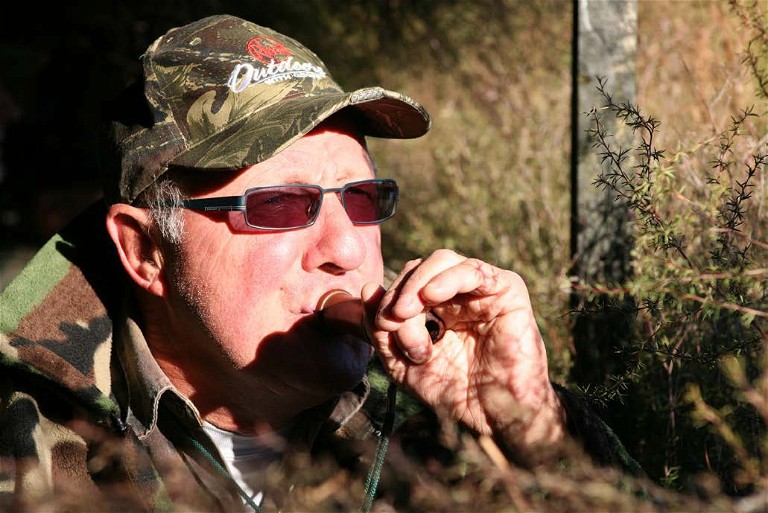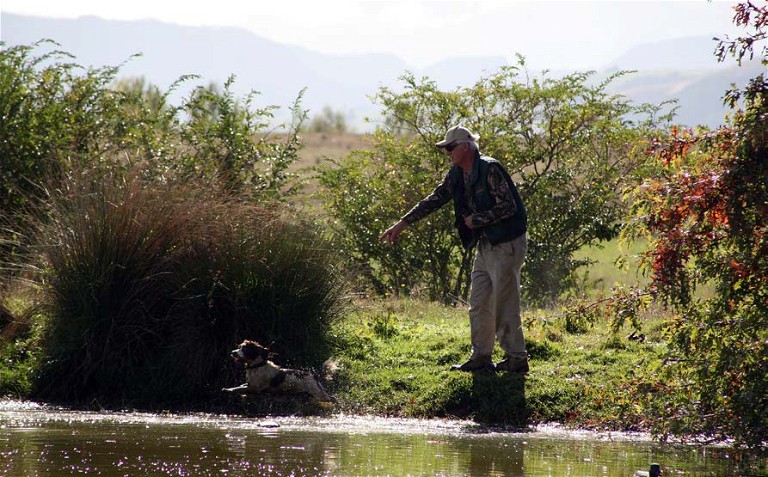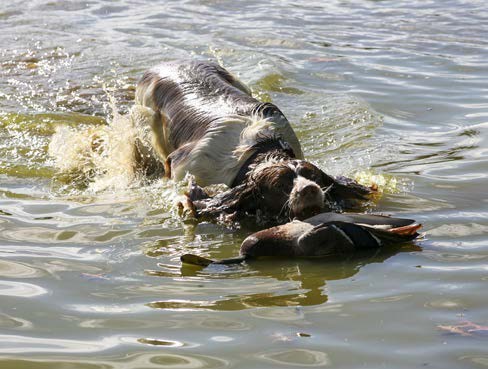GAMEBIRD HUNTING
Words by Goeff Thomas
THE HISTORY
When the first settlers arrived in N from ngland, they brought with them animals and birds that not only reminded them of the old country but also provided food and sport.
Among native birds hunted by M ori, and early uropeans dating right back to aptain ook’s arrival in 1 6 , were native ducks, kerer and godwits, which were a favourite of M ori. Today, native birds are protected but some can be hunted during the gamebird season, including grey duck, shoveler, paradise shelduck, black swan and p keko. ome of the first ships that brought settlers to New ealand carried pheasants, which were liberated in Wellington in 18 , and further liberations ensured the birds were abundant in both islands by 18 0.
The overnor and later rime Minister, ir eorge rey, was an enthusiastic importer of all sorts of different species of wildlife. He introduced the first alifornian uail, which were liberated in the Nelson area in 186 . They spread so rapidly that by 18 0 large numbers were being preserved and shipped to ondon.
Today alifornian uail, also known in the United tates as valley uail, can be found throughout the country, but are most common in dry areas like entral tago, overty ay, Hawkes ay and Northland. Two other species of uail can still be found in parts of the country. The Australian brown uail were introduced in the 1860s, but they are common only in the ay of lenty and Northland. The American bobwhite uail was less successful and is found only in outh Auckland and northern Hawkes ay. Unlike pheasants, uail are gregarious birds and live in colonies called coveys, which may number up to several hundred individuals.

Images by Goeff Thomas
Introduced ducks and geese have fared much better than the native species which are not as adaptable. Mallard ducks from North America were introduced by the Auckland Acclimatisation ociety and have spread throughout the country. These are the ducks which are commonly seen in city parks, and they can happily live alongside urban populations.

The groups of early sportsmen who got together to bring the birds, fish and animals to the ‘new country’ were called acclimatisation societies and they were highly successful with most of their attempts. Some species which were tried but did not survive include snipe, grouse, ptarmigan and various quails and pigeons.
But what these settlers did ensure was that privilege and money could not control the sports of bird shooting, hunting deer and rabbits, and fishing for trout and salmon as it does in Europe. The early rules governing the sport prohibited the charging for rights to hunt and fish, and this culture prevails today. Nobody can own a river or stream in terms of the fishing, and while access across private land is subject to normal trespass laws, the birds and fish cannot belong to individuals.
Canada geese have become the subject of much controversy in this country. They were first introduced in the early 1900s and were a gift from American President Roosevelt. While highly valued in North America as a majestic gamebird, here their numbers escalated and after pressure from South Island farmers their status was changed by the Minister of Conservation. This removed Canadas from the gamebird schedule, changing their classification to pests so they can be killed by any means at any time. Sportsmen were not happy with the change, but farmers do suffer pressure on pastures and crops from large numbers of the birds.
Two and a half Canada geese can consume the equivalent amount of pasture as an ewe, so a mob of several hundred landing on a field can do serious damage. Since the change in status, culls of several thousand birds have taken place. This is usually done when the birds are moulting and can not fly, so they can be rounded up and killed.

Today, the bulk of the licence revenue gathered goes towards management by Fish and Game. Some funds are spent on restoring and managing wetlands, because 98% of swamps in this country have been drained and converted into farmland. But keen duck hunters also buy or lease blocks of land and turn them back into swamps, planting suitable trees and grasses which benefit a whole range of native birds as well as the waterfowl.

Duck populations are carefully monitored by Fish and Game through programmes to band birds, aerial counts and hunter surveys. There are an estimated five million mallard ducks in New Zealand, and every year the population grows to numbers in excess of what nature can sustain. The winter environment cannot support so many ducks and many die of starvation. Hunting bag limits and seasons are designed to harvest game birds sustainably and about 500,000 ducks, or 10 per cent, are shot each year.

DUCKS AND DOGS IN THE MUCK
It is 6.30 in the morning and the duck shooters are crouched in their maimai, scanning the greying horizon for the first dark shapes to appear. ars are strained for the faint sounds of ducks calling to each other and the whistling of wings, and dogs tremble against the leash, bursting with anticipation.
For it is the opening weekend of gamebird shooting season and all around the country proud shooters with youngsters, partners or bunches of mates spend the day blowing their duck calls, cooking hot breakfasts on gas cookers and urging their dogs to swim out and bring back a bird. This is a tradition that goes back generations, and now opening day sees about 40,000 hunters heading out to ponds, lakes, rivers and swamps all around the country.
For man’s best friend, that first day of the new season will see dogs and their owners bond in a special way. It is a day when the four-legged friend becomes the loved companion, a day when the companion gets to ride in the front of the car for a change. Well, maybe on the way out to the swamp but after a day of jumping into the muddy water, the friend may be relegated to the dog box on the back of the ute.
For a bird shooter, seeing his dog search the bushes and reeds for a fallen duck and emerge triumphant, tail wagging and bird firmly grasped in the mouth, is the ultimate satisfaction. It is the reward for endless hours spent throwing a dummy at the local park, patiently teaching the young dog to heed his commands and learn that what started as a game is a serious business. For the dogs it will always be a game, but with practice they will learn how to trail the scent of a wounded bird; how to swing to the left or the right in response to their owner’s gestures and how to stop when he commands. For some dogs the instinct to hunt is in their genes. It just needs awakening and shaping. thers will never learn.
When it comes to water the faithful labrador is hard to beat. It is the ultimate design – a friendly family dog and natural water animal. Labs love water, just as they love to eat. They will play with young children and have even been known to develop into useful watch dogs, although some family dogs seem to think that lying down and watching is all that is required.
Other breeds like the German short-haired pointer (GSP) are thin skinned and highly strung. The cold water can get to them, although jackets made from wet suit material overcome this problem. They can be frustrating, particularly when hunting cut-over forest or fence rows for pheasants and the long-limbed s take off like rockets, leaving the hunters far behind and out of range of any bird that is flushed.
One trick which we used to employ was to let the dogs out of the vehicle when still a couple of kilometres away from the hunting spot and burn off some of their energy as they raced after the car. But a well-trained GSP will freeze on point when a bird crouches in the grass and will not move until commanded, even though its every muscle is strained and shivering with nervous energy.
Then there are the little dogs. Jack russell terriers have been known to retrieve birds and even chase wild pigs, but you are more likely to see different members of the family of spaniels bursting with excitement as ducks circle the maimai. The English springer spaniel is always popular for it is right at home in the kitchen, on the back seat of the car, pushing through blackberries while on the trail of a pheasant or leaping into a pond after a fallen duck. Their long hair needs washing after a day in the mud, and it can be a chore combing out the burrs and biddy-bids which are worn like badges of honour garnered while pushing through long grass. But it always seems a loving chore, as the tireless little warriors will not stop until totally worn out.
Nothing can replace time spent in the field with a dog. ometimes that time concentrates on field trials competitions where handlers pit their own retriever against the best from around the country. But sometimes that time does not help when it comes to the real thing. A national champion was helping us look for a duck which had fallen into a large patch of tall reeds and its owner repeatedly threw a turnip into the middle of the patch of raupo to direct the dog, which repeatedly returned with the turnip in its mouth; much to the frustration and embarrassment of the owner.
But when everything comes together – the hunter pulls off a di cult shot, the bird glides away to disappear in the scrub 100 metres away on the far side of the pond, the dog leaps over the front of the maimai, swims unerringly to the other bank, shakes itself in a spray of droplets then, nose to the ground, shu es into the bushes and appears five minutes later with the mallard grasped firmly in its mouth – it is the ultimate reward.
